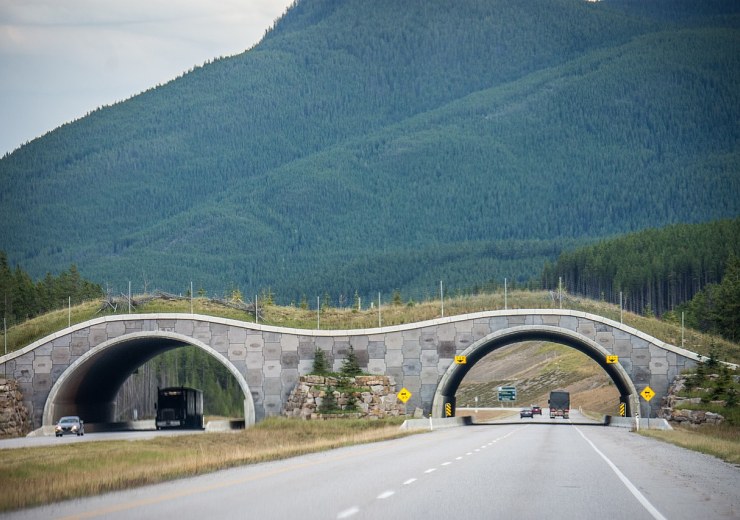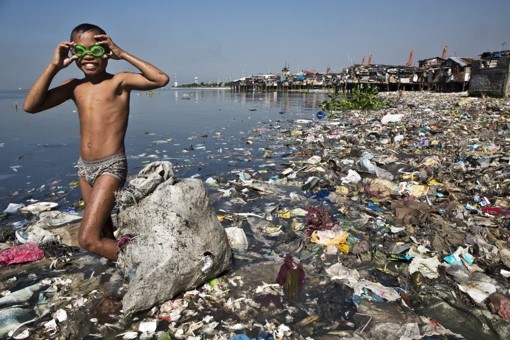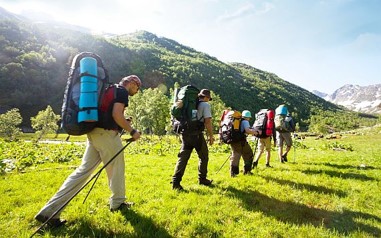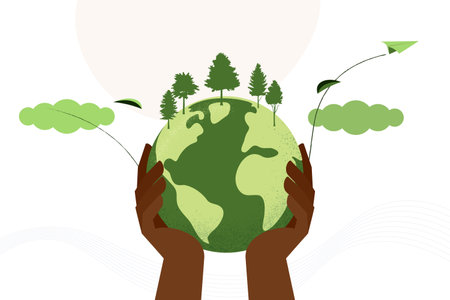Urban Wildlife Corridors: Cities Re-Connecting Nature Through Green Bridges and Tunnel Networks
In an age defined by urban expansion, glass towers, and multilane highways, it’s easy to forget that cities are not only human spaces. Beneath the concrete and beyond the noise, countless species—foxes, deer, hedgehogs, birds, and insects—continue to live, adapt, and struggle. As cities grow denser, they fragment the ecosystems that once thrived uninterrupted. Roads divide forests, railways cut through wetlands, and skyscrapers disrupt migration patterns. The result is an ecological disconnection that endangers both wildlife and the balance of urban ecosystems.
But across the globe, a quiet revolution is underway—urban wildlife corridors. Through green bridges, eco-tunnels, living walls, and green roofs, cities are finding innovative ways to reconnect fragmented habitats. These designs allow animals to move safely between green spaces, restoring biodiversity and proving that human development and nature need not be adversaries.
This essay explores how cities are reimagining their relationship with nature through wildlife corridors, highlighting notable examples, ecological impacts, and the practical steps needed to make such projects part of sustainable urban planning.
Rethinking the City as an Ecosystem
For centuries, cities were viewed as the antithesis of wilderness—a realm of human order opposed to the chaos of nature. Yet contemporary urban ecology reveals that the two are deeply intertwined. Cities generate microclimates, provide nesting areas for birds, and host surprising levels of biodiversity. The problem is not that wildlife cannot live in cities, but that urban design rarely considers their movement and safety.
When roads and infrastructure slice through natural habitats, they create what ecologists call “habitat fragmentation.” Populations become isolated, reducing genetic diversity and increasing mortality. For example, in the Netherlands, where dense infrastructure crisscrosses the landscape, amphibians and small mammals often die attempting to cross highways. Similar patterns are seen globally—from koalas in Australia struck on suburban roads to deer in North America colliding with cars.
Wildlife corridors offer a solution. These are linear or connected pathways that allow animals to travel safely between habitats. They can take many forms: overpasses covered with vegetation, tunnels beneath highways, or even connected parks and green roofs forming continuous routes across cities. The goal is to integrate ecological connectivity into the very fabric of urban life.
Green Bridges and Eco-Tunnels: Global Innovations
Some of the most impressive wildlife corridors are engineering marvels that merge ecological vision with urban design.
One of the earliest and most famous examples is the Ecoducts of the Netherlands. The country has over 70 wildlife overpasses and tunnels designed to let animals cross busy highways. The Natuurbrug Zanderij Crailoo, near Hilversum, is among the largest in the world—stretching over 800 meters. It connects two major nature reserves separated by a railway, business park, and road, creating a lifeline for deer, boar, reptiles, and insects.
In Banff National Park, Canada, a network of wildlife overpasses and underpasses along the Trans-Canada Highway has become a global model for success. Motion cameras have documented over 150,000 successful crossings by species including grizzly bears, wolves, and elk. Researchers note a more than 80% reduction in animal-vehicle collisions, demonstrating that ecological design can save both wildlife and human lives.
Europe and Asia have embraced similar innovations. In France, green bridges (passages à faune) connect fragmented forests across highways. Singapore’s Eco-Link@BKE, a 62-meter-long hourglass-shaped bridge, links two nature reserves that had been divided for decades, allowing critically endangered species like the Sunda pangolin to move safely. In South Korea, the city of Seoul created the Chunggyecheon Stream Restoration Project, which transformed an old highway into a riverine corridor for both humans and wildlife, reviving fish, birds, and vegetation in the heart of the metropolis.
Even in the United States, where car-centric infrastructure has long dominated, change is emerging. The Wallis Annenberg Wildlife Crossing, currently under construction in California, will become the world’s largest wildlife bridge when completed. It will reconnect the Santa Monica Mountains ecosystem, providing a safe passage for mountain lions and other species endangered by urban isolation.
Table: Notable Urban Wildlife Corridor Projects
| Location | Project Name | Type | Key Species Benefited | Outcome/Impact |
|---|---|---|---|---|
| Netherlands | Natuurbrug Zanderij Crailoo | Green bridge | Deer, boar, reptiles, insects | Reconnected major reserves; improved genetic flow |
| Canada | Banff National Park Overpasses | Overpasses & tunnels | Grizzly bears, elk, wolves | 80% reduction in wildlife collisions |
| Singapore | Eco-Link@BKE | Green bridge | Sunda pangolin, civets, birds | Revived inter-reserve biodiversity |
| South Korea | Cheonggyecheon Stream | Urban corridor restoration | Fish, birds, insects | Reintroduced wildlife in downtown Seoul |
| USA (California) | Wallis Annenberg Wildlife Crossing | Green bridge | Mountain lions, bobcats | Under construction; expected to reconnect 3 ecosystems |
These examples reveal that wildlife corridors are not luxury projects but critical ecological infrastructure. They redefine urban design as not just human-centered, but life-centered.
Beyond Bridges: Everyday Corridors in Urban Life
While monumental green bridges make headlines, many of the most effective wildlife corridors are smaller, subtler, and community-driven. Urban planners and citizens alike can create micro-corridors—green roofs, pocket parks, vegetated walls, or even connected backyard gardens—that form stepping stones for birds, bees, and pollinators.
For instance, London’s “Green Grid” initiative integrates biodiversity corridors into the urban landscape through linked parks, waterways, and community gardens. The Singapore Green Plan similarly promotes rooftop gardens and vertical greenery that double as habitats. These micro-corridors not only help wildlife but also cool cities, absorb carbon, and improve human wellbeing.
Educational institutions are also joining the movement. At the University of Melbourne, researchers developed “bee highways” — continuous rows of flowering plants across campus rooftops, allowing pollinators to move freely between gardens. In Los Angeles, community-led initiatives like “Backyard Biodiversity Corridors” connect neighborhoods through native plantings, supporting hummingbirds, butterflies, and small mammals.
This reflects a broader philosophical shift: nature is no longer something to be protected from the city, but within it. The line between human and animal space is being redrawn — not as a boundary, but as an invitation.
Ecological and Social Benefits
The ecological benefits of urban wildlife corridors are well-documented. They:
-
Restore genetic diversity by reconnecting fragmented populations.
-
Reduce roadkill and human-wildlife conflicts, improving road safety.
-
Enhance ecosystem services, including pollination and pest control.
-
Increase urban resilience by cooling temperatures, filtering air, and reducing flooding through natural vegetation.
However, the social and cultural benefits are equally significant. Urban wildlife corridors reconnect people with nature in daily life. They turn cities into living classrooms where residents can witness ecosystems functioning firsthand. A child who sees a hedgehog crossing a park bridge or birds nesting along a green wall gains a deeper sense of coexistence and environmental stewardship.
Moreover, studies show that exposure to green infrastructure improves mental health, reduces stress, and fosters a sense of belonging. In this way, wildlife corridors become not only ecological systems but also social infrastructure — knitting together human and non-human communities.
Challenges and the Path Forward
Despite their benefits, wildlife corridors face numerous challenges. High costs, political resistance, and competing land uses can delay or derail projects. Engineers must balance structural safety with ecological functionality, ensuring that bridges and tunnels truly meet the needs of local species.
Another issue is maintenance. Without proper monitoring, vegetation may fail, invasive species may spread, or animals may avoid crossings altogether. Collaboration between ecologists, architects, and communities is essential.
Funding remains a hurdle, especially in developing countries where urban priorities often focus on housing and transport. Yet, as successful projects show, the economic return on ecological infrastructure — through tourism, reduced accidents, and ecosystem services — often outweighs the initial investment.
To scale up, cities must adopt policy frameworks that integrate biodiversity into urban planning. Governments can incentivize developers through “green building credits” for wildlife-friendly design. Citizen science programs can monitor corridor usage, creating a shared sense of ownership. Education is equally vital—teaching future architects and engineers to think ecologically, not just structurally.
A New Vision for Coexistence
The rise of urban wildlife corridors signals a broader transformation in how humanity imagines its relationship with nature. No longer is conservation confined to remote forests or national parks. It now extends to rooftops, railways, and backyards. The city, once seen as a symbol of separation from the natural world, is becoming a laboratory for coexistence.
As climate change accelerates and biodiversity declines, reconnecting fragmented ecosystems is not optional—it is essential. Green bridges and tunnel networks represent a shift from domination to dialogue, from isolation to integration. They remind us that every living being—human or otherwise—needs safe passage.
In the end, wildlife corridors are more than environmental projects. They are acts of empathy, recognizing that cities belong to all forms of life. When we build with that awareness, we create not just smarter cities, but kinder ones — places where the pulse of the wild still beats beneath the hum of human progress.





